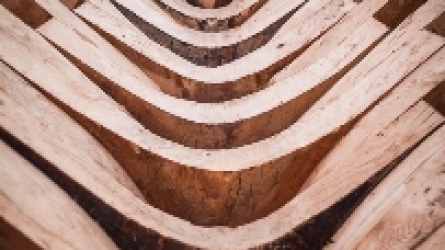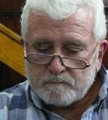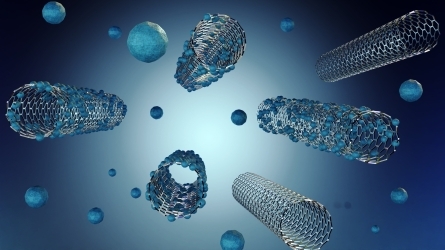
Study and analysis of the Victoria nao’s technological context, in the period of the first world round
Description
Throughout the 13th to the 16th century, Basque naval technological evolution would produce craft that came to dominate the commercial routes opened up between the Mediterranean and the European Atlantic. This process culminated with the development of the ocean-going ships, which were protagonists of the first circumnavigation and exercised their hegemony in the relations between the old and the new worlds. 2018 is the year of cultural heritage, and the antechamber of the 5th Centenary of the First Circumnavigation of the World by Juan Sebastian Elcano on board the Victoria.
Objectives
Discover the naval technological evolution that took place in the Basque Country between the final centuries of the Middle Ages and the Renaissance.
Discover the characteristics of Basque ocean-going ships, like the Victoria.
Discover first hand the results of the archaeological investigations undertaken in the main Basque shipwrecks dated form between the end of Medieval times and the beginning of Modernity.
Discover the historical context in which this naval technological evolution took place in the Basque Country.
POSTERS
The assistants of the Congress will have the possibility to present to the public their lines of work, research projects or experiences through posters.
Contributors
Directors

Xabier Alberdi Lonbide
Untzi Museoa - Museo Naval, Director Científico
XABIER ALBERDI LONBIDE (Zarautz, 1969-V-18), licenciado en Historia por la Universidad de Deusto (1992), Máster en Gestión de Recursos Culturales por la Universidad de Deusto (1993) y doctor en Historia Moderna (Universidad del País Vasco, 2006), con la tesis Conflictos de intereses en la economía marítima guipuzcoana durante la Edad Moderna. Es director de la Sección de Investigación de la Asociación Albaola y Director Científico del Untzi Museoa, Museo Naval de San Sebastián. Actualmente trabaja como asesor en historia para el Ayuntamiento de Getaria y la Mancomunidad de Urola-Kosta con el objetivo de organizar el 5. Centenario de la Primera Vuelta al Mundo. Director de diversos proyectos de investigación histórico-arqueológicos, entre los que cabe citar la codirección de Placentia Island Project. Basque early presence in New England research project. Es autor de diversas publicaciones entre las que cabe destacar su tesis doctoral.
Speakers

Xabier Agote
Albaola

Marion Delhaye

Manuel Izaguirre Lacoste
Toby Nephi Jones
Toby Jones is a nautical archaeologist and the curator of the Newport Medieval Ship, a 15th Century clinker built merchant vessel found in the River Usk in Newport, South Wales, in 2002. He has worked on several other projects around the world, including the Red River Wreck in Oklahoma, the Aber Wrac’h I wreck in Brittany and the Mica shipwreck in the Gulf of Mexico, which was investigated using ROVs and the NR-1, a nuclear-powered submarine, at a depth of over 800 metres. He has also participated in shipwreck surveys along the southern coast of Cyprus, and in the Algarve in Portugal. Toby is a graduate of Oregon State University (BA-History) and Texas A&M University (MA-Anthropology – Nautical Archaeology). He completed a PhD in Archaeology at the University of Wales Trinity Saint David. He specialises in three-dimensional digital documentation and post-excavation research and project management.

Bradley Allan Loewen

Marcel Pujol Hamelink
Doctor en Historia por la Universidad Autónoma de Barcelona, DEA en Arqueología Medieval por la Université de Paris I-La Sorbonne, Master en Gestión del Patrimonio Histórico y Arqueológico por la Universidad de Barcelona, en Archivística por la Universidad de Girona, y en Cerámica Medieval y Postmedieval por la Universidad de Barcelona. Ha participado desde 1983 en excavaciones arqueológicas, tanto terrestres como subacuáticas, en Cataluña, Menorca, Francia y Holanda, entre las que cabe destacar la dirección del navío Triunfante en aguas del Golfo de Roses (2006-2008). Desde 1994 es profesor de Arqueología en la Escuela Superior de Conservación y Restauración de Bienes Culturales de Cataluña. Profesor del Máster de Arqueología Náutica de las Univ. de Barcelona y Cádiz, y en cursos de verano de las Universidades de Murcia, Granada, València y Girona.
Eric Rieth
Musée National de la Marine, París, Director
Dr Eric Rieth is a nautical archaeologist and professional diver who has been directing underwater excavation of wrecks since 1971. His speciality is inland and seagoing boat and ship archaeology. He is now Emeritus Director of Research at the National Centre of Scientific Research (CNRS). He teaches nautical archaeology at the Institute of Art History and Archaeology of the Sorbonne University (Paris 1). He is chief of the Nautical archaeology department of the National Maritime Museum, Paris. Last book published : Navires et construction navale au Moyen Age. Archéologie nautique de la Baltique à la Méditerranée, Editions Picard, Paris, 2016.

José Javier Vicedo Jover

Mikel Soberón Rodríguez
Licenciado en Historia por la Universidad del Pais Vasco – Eukal Herriko Unibertsitatea (UPV-EHU) el año 2001. Desde entonces dedicado a la arqueología urbana en Barcelona. Ha cursado el Máster interuniversitario en Identidad Europea Medieval, con un TFM dedicado al derecho de anclaje. Actualmente doctorando por la Universidad de Girona con la tesis “El dret d’ancoratge i el port medieval de Barcelona (m. XV – p. XVI) bajo la dirección de los doctores Pere Ortí i Roser Salicrú. Miembro del equipo de trabajo del grupo de investigación Tripulacions, armaments, construcció naval i navegació a la Mediterrània medieval” (MINECO-HAR2013-48443-C2-1-P). Miembro de la red Salvador Riera para el fomento de la investigación de la pesca marítima.
Registration fees
| REGISTRATION | Until 15-06-2018 | Until 05-09-2018 |
|---|---|---|
| 30,00 EUR | 60,00 EUR | |
| 0 EUR | - | |
| - | 30,00 EUR | |
| - | 0 EUR | |
| - | 0 EUR |
Venue
Miramar Palace
Pº de Miraconcha nº 48. Donostia / San Sebastián
Gipuzkoa
Miramar Palace
Pº de Miraconcha nº 48. Donostia / San Sebastián
Gipuzkoa





